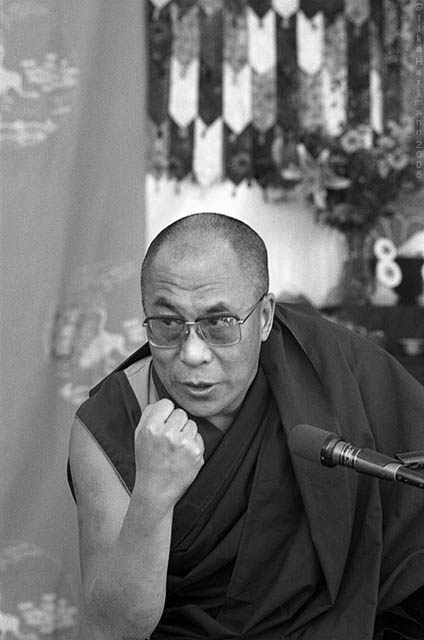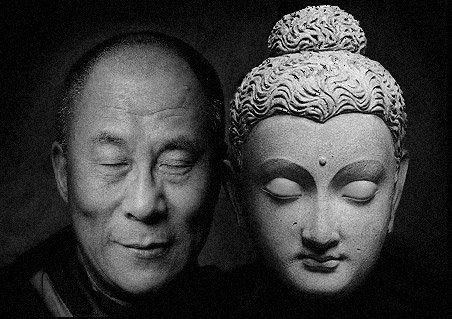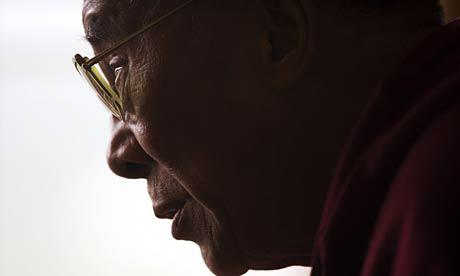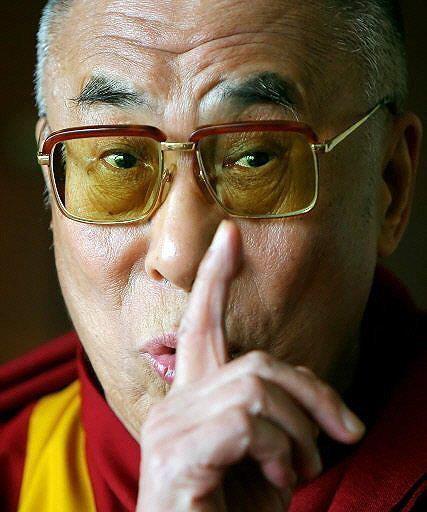 Prima parte del Commentario su Gyalwa Gyatso dato da Sua Santità il Dalai Lama a un gruppo di occidentali al Tempio di Teckchen Choeling a Dharamsala, in India, il 1 settembre 1984.
Prima parte del Commentario su Gyalwa Gyatso dato da Sua Santità il Dalai Lama a un gruppo di occidentali al Tempio di Teckchen Choeling a Dharamsala, in India, il 1 settembre 1984.
Appunti, traduzione dall’inglese ed editing del Dott. Luciano Villa, dell’Ing. Alessandro Tenzin Villa e di Graziella Romania nell’ambito del Progetto “Free Dalai Lama’s Teachings” per il beneficio di tutti gli esseri senzienti.
Sua Santità il Dalai Lama
Non ho il lignaggio effettivo su questo insegnamento, né il lignaggio della trasmissione orale, ma vi darò una introduzione generale a questa pratica.
All’inizio potrebbe essere d’auspicio recitare cento MANI, penso che è meglio.
(seguono: Preghiere, Offerta del Mandala, Mani.)
Per distinguerci dai seguaci del sentiero distorto, prendiamo Rifugio per distinguerci dalle motivazioni inferiori, dalla motivazione Hinayana, perciò vi è lo sviluppo di Bodhicitta. Dobbiamo ripetere i versi del Rifugio e Bodhicitta …
san ghie cio dan tso chi cio nam la (Nei supremi Buddha, Dharma e Sangha)
cian ciub bar du dag ni chiab su ci (prendo rifugio fino all’Illuminazione)
…dag ghi gin sog ghi pe so nam chi (Per i meriti da me accumulati per generosità ecc.)
dro la phen cir san ghe drup par sciog (Possa io diventare Buddha per essere di beneficio agli altri esseri) (x3)
Quanti di voi capiscono il tibetano? Un poco?
Poiché non vi è molto tempo, non entrerò in una spiegazione molto dettagliata. Ritengo inoltre che è possibile leggere i dettagli per quanto riguarda la visualizzazione, si può capire questo attraverso la lettura. Ho intenzione di sottolineare, provare a spiegare, quei punti che sono importanti non solo in questa pratica, ma come una pratica generale, la pratica tantrica, o fondamentalmente pratica buddhista, poi la pratica Mahayana, entro tale pratica Tantrayana, all’interno di tale pratica Maha-Anuttarayoga. Ho pensato che potrebbe essere meglio per spiegare questi punti importanti. Continue reading


